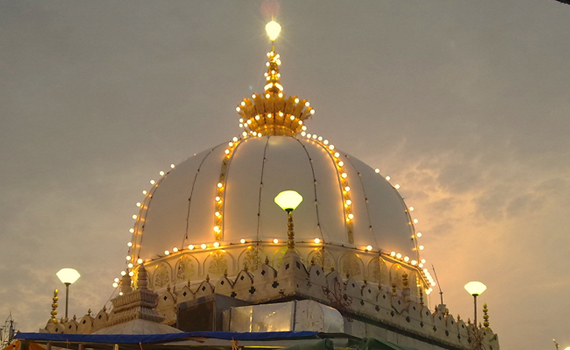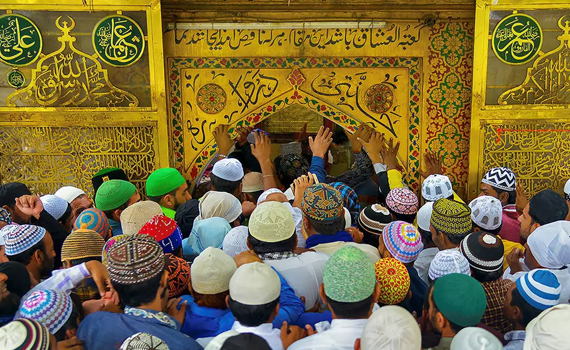- Home
- About Us
- About Ajmer Dargah

About Ajmer Dargah
Ajmer Dargah, a place where people strongly believe that if a person prays for anything it gets fulfilled.
Ajmer sharif dargah is situated exactly in the center of Ajmer (Rajasthan). It is considered the holiest place in Ajmer. The shrine at Ajmer Sharif Dargah was made by Mughal emperor Humayun for Sufi saint Khwaja Moinuddin Chishti after his death. Later other mosques were also built around it, which were built by emperors Akbar and Shahjahan. The tomb was revered by people from all walks of life, and the era's most powerful Sunni rulers regarded it with great reverence.
Moinuddin Chishti comes in a succession of Mohammad by the father’s line. He was a very compassionate spiritual preacher. He came to India, specifically Ajmer and he started the Chisti order of Sunni mysticism.

Architectural Beauty of Ajmer Dargah.
The Dome seems to be the prime attraction of the dargah while looking from outside. The golden crown on the dome was donated by Nawab Haider Ali Khan, Nawab of Rampur. The dome was made in the year 1532 and is made from marble.
There are a total of eight entrance gates to Dargah of which three are in use currently. These three gates are named Nizam Gate, Shahjahani Gate which was made by Shah Jahan, and then there is The Jannati Darwaza which is completely made with silver. There are eight more tombs of successors, along with the tomb of Moinuddin Chishti.

Culture of Serenity at Dargah.
TheSince medieval times, the dargah has become a pilgrimage ground for adherents of Islam and Hinduism. Inquisitive travelers come here from all parts of the world. The number of visitors to Dargah is 20,000 per day. Travelers offer chaddar to the shrine.
The main rituals at dargah include five prayers which are sung by Muslims daily, called Namaz.
Qawwalis are sung by the people at Night which are the prayers to the lord. Then the durbar is cleaned by the Khadim’s with the brooms made from peacock feathers. Then the last prayers of the day (Karka) and the dargah gets locked. Then it is again opened on the next day for early morning prayers.
The Holy festival of Urs
It is said that the death ceremony of a saint is not celebrated by the people, because after the saint leaves the body he departs to the holy kingdom of God. A similar case can be seen here, The death anniversary is celebrated with enthusiasm and vigor by people. The festivities begin at the end of the Islamic month of Jumada al-Thani and last for six days, starting on the last day of Jumada al-Thani and ending on the sixth day of Rajab. Members of Bhilwara's Gori family march through the district, hoisting the flag on the Buland Darwaza, signaling the start of the death anniversary rituals. The urs rituals begin after the moon is seen. The Aser ki Namaz follows this. At the Mahfil Khana, the mahfil held every night, and women are welcome to attend.
